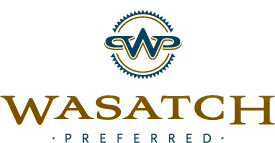Demolition projects are one of the most dangerous activities in the construction industry due to the incidence of falling and flying debris, which puts workers at risk of injury.
To reduce the risk of injury you need to start by including a supervisor who is experienced in all phases of demolition work. You should work closely with that individual when planning the project. Those plans should include:
- The planning methods that will be used to bring the structure down.
- The equipment needed to do the job.
- Securing the appropriate permits and notifying all relevant public utilities.
Before the project
Before beginning any demolition work, an engineering survey report is required. A competent person is required to conduct the survey prior to the commencement of any demolition work.
The purpose of the engineering survey is to thoroughly evaluate the project in order to identify potential hazards and develop controls to prevent accidents. Potential hazards include:
- Occupational health hazards
- Cave-ins
- Explosions
- Premature collapse
- Fire
Contractors must have written evidence that an engineering survey was conducted, and retain that report on-site.
For contractors that perform demolition work on an infrequent basis, it is recommended that a safety consultant’s services be contracted for the demolition work.
Safety requirements for demolition
Demolition work is dangerous business and if your company is doing the demolition or has hired a contractor, you need to ensure that all necessary safety equipment and devices are available. That includes:
- Appropriate respirators.
- Hearing protection.
- Safety nets, lifelines and fall protection, including railing and safety harnesses.
- Warning signs.
- Eye, face and head protection.
- Sidewalk sheds or canopies at all entrances.
- Water to keep material or debris wet, in order to prevent dust from rising.
Here are some additional considerations:
- If the hazard comes in the form of a wall opening, through which a worker may fall, the opening must be protected to at least 42 inches in height.
- If the structure is damaged altogether and your employees have to work inside, you must first brace the floors, walls and/or ceiling.
- Remember to shut off all utility and service lines before starting with the demolition project. If this is not possible, then you should cap or control the lines outside the building.
- Make sure to cover all employee entrances to multi-story structures to a distance of at least 8 feet from the structure. The cover must be at least 2 feet wider than the entrance and able to support at least 150 pounds per square foot.
- Demolition of structures should always start from the top going down. Each material of a story must be demolished, removed and dropped to the designated area before demolishing the next story.
- Sometimes no chutes are used when debris is dropped through holes in the floor or walls. In this case, you should enclose the drop area with barricades that are at least 42 inches high. Warning signs must also be posted on all sides of the area.
- The demolition area should be clearly marked as such to ensure that only authorized personnel are within restricted areas of the site.
- All site workers or authorized personnel should be dressed in appropriate personal protective wear and be informed of safety practices and emergency procedures.
Be prepared for emergencies
Despite our best efforts and safety precautions, accidents can and still do occur.
You need to train your workers in how to respond to emergencies. Put in place emergency procedures, train your employees in those procedures and post them in a conspicuous place.
Make sure to include on a poster all of the local medical or emergency responding facilities, with their phone numbers and addresses.
Post all first aid and CPR equipment, with the names of on-site certified individuals.
